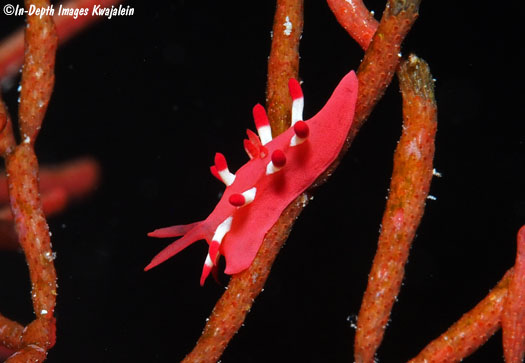
Ceratodoris nakamotoensis is one of two species that not only are colored very much alike, they live in the same areas and eat the same bryozoan. See the text under Ceratodoris kondoi for a description of the differences between the two species. The bryozoan prey of both species is shown in some of the photos below. Both species live in ledges and small caves on lagoon pinnacles and occasionally on the seaward reef. In the right areas, they are quite common, but you have to look close. The largest specimens we've seen are about 10mm long, but most are in the 3 to 7mm range. Ceratodoris nakamotoensis was first reported in the Marshalls from Enewetak and Kwajalein Atolls by Gosliner (2004) as Okenia nakamotoensis.

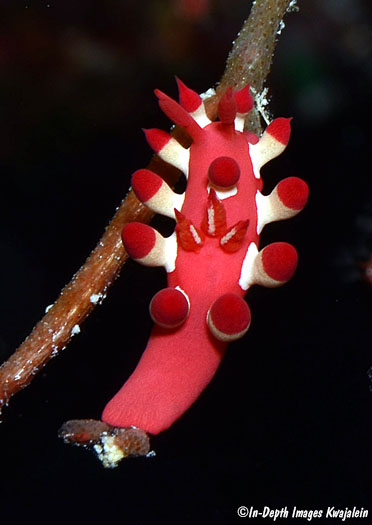
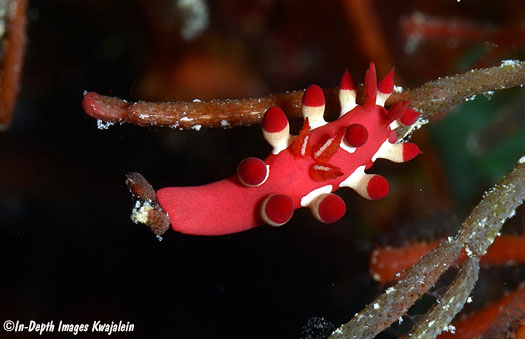
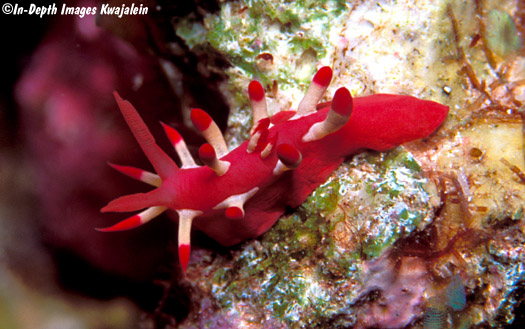
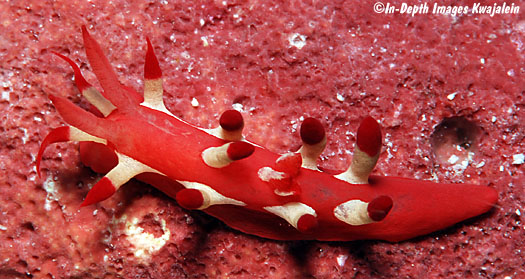
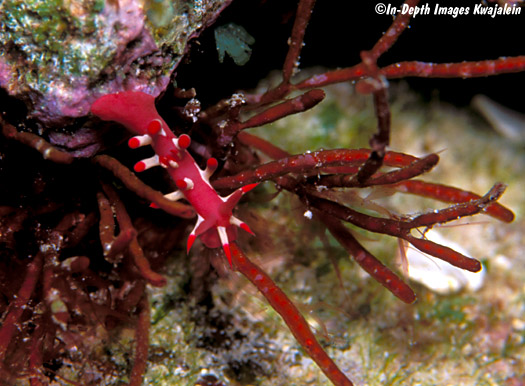
Ceratodoris nakamotoensis and C. kondoi can often be found on the same bryozoan colony, as seen in the photo below. The lower animal is C. nakamotoensis and the upper, partially hidden by a branch of the bryozoan, is C. kondoi.
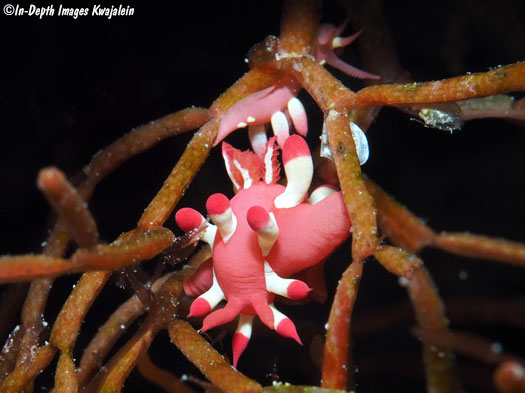
The picture below is a bit fuzzy, but it shows how the nudibranch wraps its foot completely around the bryozoan colony to help hold on in currents or surges.
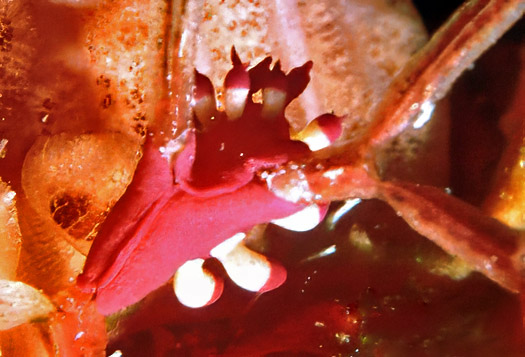
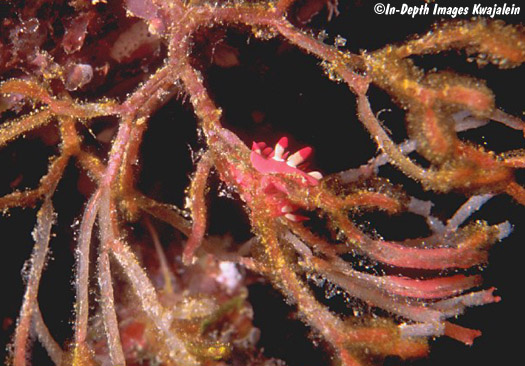
Below are a couple of several specimens observed in ledges on a Kwajalein Atoll lagoon pinnacle on 13 October 2009. This was at one of several places where we seem to be able to see them anytime.
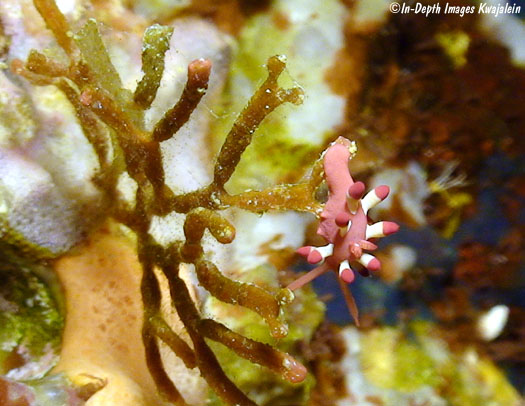
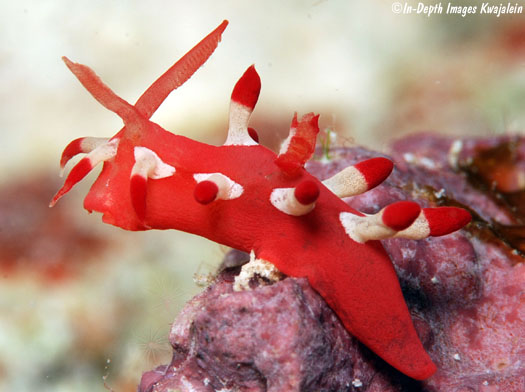
This one was on a lagoon pinnacle on 9 August 2012.
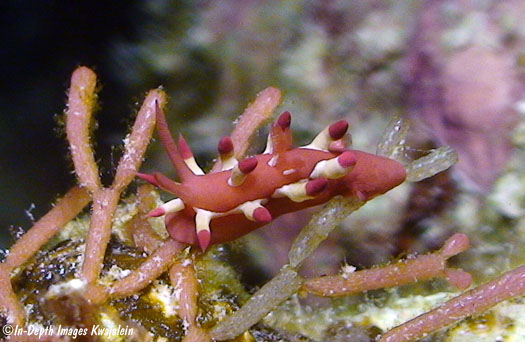
The prey bryozoan of both Ceratodoris nakamotoensis and C. kondoi is Tropidozoum cellariiforme, shown with its zooids extended below.
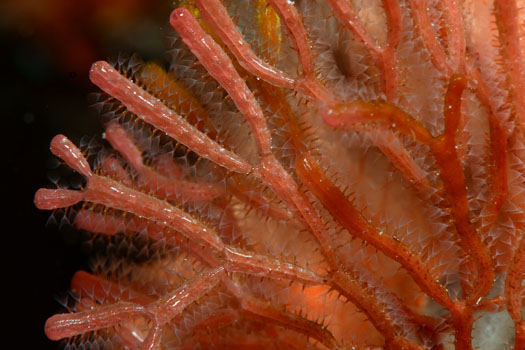
An egg mass, probably of either Ceratodoris nakamotoensis or C. kondoi. It is attached to a blade of algae between the branches of the prey bryozoan.
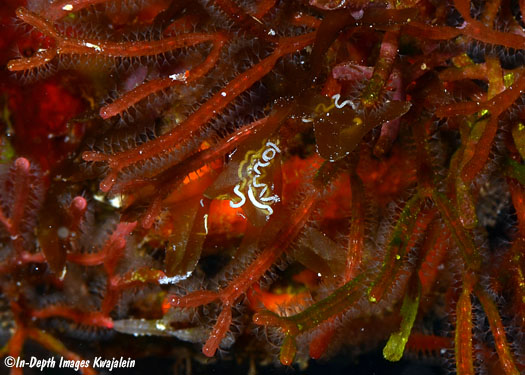
Created 3 January 2007
Updated 17 December 2023